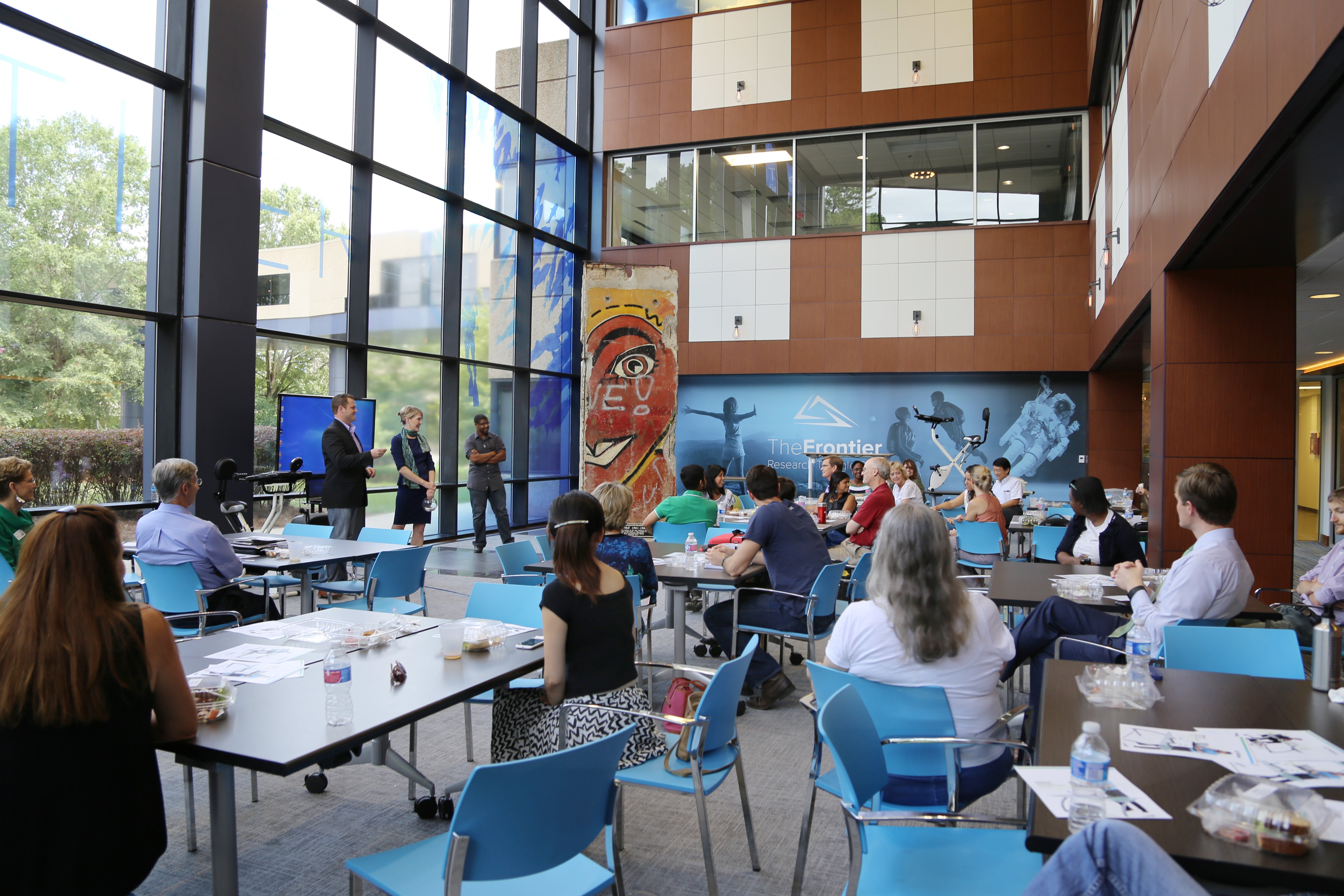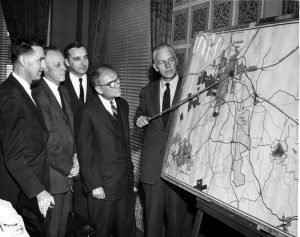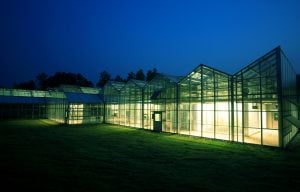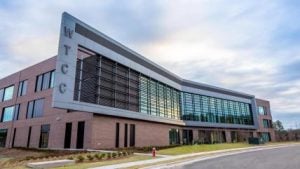

When the Research Triangle Park was established, I was a preschooler, and the US Government used Twentieth Century typeface for its publications. I discovered the latter as I read through the NIH annual reports over the last 59 years, and discovered that NIH’s budget has increased from $291M in 1959, the year RTP was founded, to $37B today. The budget has provided a 127-fold increase and is exponentially larger than the overall Federal budget, which increased about 50-fold in the same period.
The growth in investment in NIH research, whose Environmental Health arm, NIEHS, operates in RTP, has exceeded both inflation and the rate of growth of the Federal budget for 59 years—an almost 9% annual compounded rate of increase—one that all our retirement portfolios should emulate. This prudent investment in research has served our country and its citizens well. But how does this data inform the direction of RTP looking forward?
The Planning Model for RTP
As the NIH spending growth suggests, in 1959, research in the basic sciences was skewed more toward private industry than that of public research institutions. The story of Bell Labs as described by Douglas Coupland in “Kitten Clone: Inside Alcatel-Lucent” is a bellwether for how corporations have transitioned investments in new technologies from self-invented to a collaborative approach among major research institutions and start-up companies. This transition was made clear in RTP’s original mission statement:
-

This RTP greenhouse remains lit 24 hours a day—an example of why privacy is still a crucial part of the Park’s appeal. Facilitate collaboration between the Triangle universities.
- Promote cooperation between universities and industry.
- Create an economic impact for citizens of North Carolina.
RTP exceeded expectations on the above goals by imposing land covenants that resulted in private, secure R&D campuses. These covenants attracted companies with strict requirements for the research and commercialization of discovery in pharma, medical devices, ag-tech, IT and other industries.
The Changing Model
As companies and their functional models morphed, the format for invention in the US has become more decentralized. Government and private labs, research universities, startups, and established R&D companies all play roles in developing intellectual property and converting it to marketable goods and services.
In addition to the significant changes in business models over the years, many of us are tired of driving to work in traffic, eating lunch in the commissary, and being isolated among the same work peers in the office—“live, work, play” has truly become a mantra of the twenty-first century.
Real estate developers and existing research park operators like the The Research Triangle Foundation are embracing this demand with mixed-use town centers supported by robust transportation solutions that are ancillary to our research parks. New research parks are locating in post-industrial areas adjacent to the urban core to feed new energy both ways—from the core to the new innovation community and back again. University City Science Center in Philadelphia and South Lake Union in Seattle are poster projects for this strategy.
What Does This Mean for the Future of The Research Triangle Park?
When I was appointed President and CEO of RTP in August 2017, I ignorantly assumed that once RTP’s top priority—redeveloping a 100-acre core property into a new mixed-use center—got under way, we would then focus on ways to partner with companies around RTP that conformed to the more isolated planning model. The goal of this would be to rezone and repurpose existing campuses for the new innovation community model.
What I have learned, though, is quite different, and will shape our strategy for the future of RTP:
-

The Frontier has helped redefine the Park so that companies of all sizes can collaborate—not just large R&D corporations. We need to redouble our effort to bring Park Center, our 100-acre mixed-use redevelopment project, out of the ground. It needs to be a transit-supported innovation community that provides places to live and work while showcasing the extraordinary transformation of North Carolina’s economy and society. When RTP was founded in 1959, we ranked 49th economically in the country. Today, we’re 18th.
- The Foundation is repurposing a former IBM campus adjacent to Park Center into The Frontier—a bootstrapped innovation community that first tested whether creative folks would embrace a coworking and startup community at RTP. Once we received a resounding “Yes!” the decision was easy to continue the expansion to include 6 other buildings. These buildings provide inexpensive office and lab space supported by community programming (and free parking to boot). Companies and developers in the region have supported The Frontier initiative, mostly because the incubators of Raleigh, Durham and Chapel Hill are churning out emerging companies that, without inexpensive space to scale up, would be challenged to remain in the region and grow their businesses.
- We need to expand our support from RTP’s original founding institutions (UNC, NC State and Duke) to acknowledge the broadened delivery network for higher education in the US. Wake Technical Community College serves 74,000 students annually, and has just opened its new RTP campus. Wake Tech is not your standard community college; it offers a number of specialty programs, including a military veterans program, customized degree and certificate programs for companies in the region, and executive education. North Carolina Central University, a HBCU that is the closest college to RTP, is exploring partnership opportunities with RTP that will connect its entrepreneurial students with the 280 businesses in the Park. To symbolize this new endeavor, its chancellor, Dr. Johnson Akinleye, joined the Research Triangle Foundation Board in November 2017.
-

Wake Tech’s RTP campus. As companies seek to expand or relocate, they look for venues that will enhance their ability to find and compete for talent within more affordable markets. Surprisingly, a number of these companies still express a preference for private, controlled sites that comply with the original covenants. For these reasons, the Triangle region has attracted significant attention. We also continue to support companies and research institutions that are governmental facilities or need to comply with governmental security requirements to win research contracts. This is an important cohort of our economic cluster that requires proximity to the universities, research institutes, and talent. As suburbanization overtakes formerly rural areas within the Triangle Region, RTP’s land—with its development restricted covenants—offers a valuable land inventory that is quickly diminishing outside of the Park.
This is a transformative and exciting time for the Triangle Region. We are energized by these opportunities to continue the role of the Research Triangle Park in fulfilling our mission: university collaboration, attraction of new business, and creating better opportunities for all citizens of North Carolina.